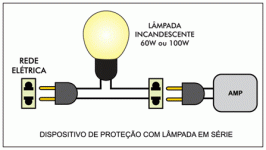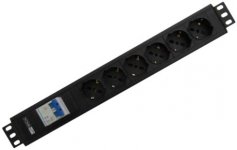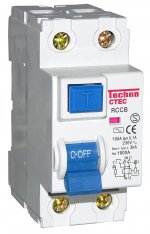Hi ! as it is better to be safe than sorry i would like to put together a current limiting circuit using a light bulb
I am attaching a schema i found
I wonder if this will provide protection however the two-pins power plug is plugged inside the wall socket
I mean there is a wire running through the bulb ... but another one not
Is this is the live wire ... and i touch it ... no problem at all ?
I am attaching a schema i found
I wonder if this will provide protection however the two-pins power plug is plugged inside the wall socket
I mean there is a wire running through the bulb ... but another one not
Is this is the live wire ... and i touch it ... no problem at all ?
Attachments
And, if you make a mistake and touch a live wire, what happens? The golder rule with mains powered electronics is to treat all exposed conductors as live.
Caution is never excessive where the loss of life is involved.
Caution is never excessive where the loss of life is involved.
Where do you pull those crazy ideas from?Hi ! as it is better to be safe than sorry i would like to put together a current limiting circuit using a light bulb
I am attaching a schema i found
I wonder if this will provide protection however the two-pins power plug is plugged inside the wall socket
I mean there is a wire running through the bulb ... but another one not
Is this is the live wire ... and i touch it ... no problem at all ?
The **current** bulb limiter somewhat protects amplifier from shorts, period.
Why do you think it will protect YOU from electric shock? 😱
This device does 2 things:
1. Reduces the risk of melting something or having it blow up, if there's a short circuit in the DUT
2. Lights up to warn you of said short circuit so you can isolate power quickly, see point 1
It will not in any way reduce the risk of electric shock.
1. Reduces the risk of melting something or having it blow up, if there's a short circuit in the DUT
2. Lights up to warn you of said short circuit so you can isolate power quickly, see point 1
It will not in any way reduce the risk of electric shock.
A current limiter like this is only used to power an amplifier that is under repair.
It is not intended to be in permanent use, and does not protect the user against electric shock.
Information about the 'dim-bulb tester' can be found here: Powering Your Radio Safely with a Dim-bulb Tester
It is not intended to be in permanent use, and does not protect the user against electric shock.
Information about the 'dim-bulb tester' can be found here: Powering Your Radio Safely with a Dim-bulb Tester
This thread is most probably the result of bad advice.
Let us suppose, for the sake of clarity, that you connect the filament light bulb to the Live terminal and the other end to supply the amplifier under test. Let us also assume the other terminals are connected to the neutral. The potential of the terminal from the light bulb into the amplifier will depend on the current taken by the amplifier. When this current is high, the latter potential is lower, when the current is low the potential is higher. But the potential entering into the amplifier heavily depends on how it works and whether its condition remains stable. Therefore, it is very risky and dangerous to expose oneself to any conductive parts during such tests.
The only ethical and responsible attitude is necessarily one of great caution.
Let us suppose, for the sake of clarity, that you connect the filament light bulb to the Live terminal and the other end to supply the amplifier under test. Let us also assume the other terminals are connected to the neutral. The potential of the terminal from the light bulb into the amplifier will depend on the current taken by the amplifier. When this current is high, the latter potential is lower, when the current is low the potential is higher. But the potential entering into the amplifier heavily depends on how it works and whether its condition remains stable. Therefore, it is very risky and dangerous to expose oneself to any conductive parts during such tests.
The only ethical and responsible attitude is necessarily one of great caution.
Last edited:
ref. post 2
Hi thanks a lot for the very helpful reply. I would like to some kind of protection because i am connecting power supply with terminals exposed
So i could touch a live connector.
I will be using a power strip so the protection should be place upstream the strip
my power strip has a magnetothermic switch ... is it enough ?
Nothing makes exposed connections safe except covering them - that is, enclosing them in an insulated box or applying insulation in the form of heat shrink tubing or electrician's tape.
If you can touch it, it can kill you. Nothing you put in the circuit will reduce that danger.
A circuit breaker isn't there to protect you. Circuit breakers are there to prevent fires. You can be electrocuted and die, and the circuit breaker will never notice enough of a current flow to trip.
--------
A residual current device (RCD) or ground fault circuit interrupter (GFCI) (Residual-current device - Wikipedia) can switch off the current fast enough to save your life. That's why they are required in new houses.
If your house doesn't have GFCI or RCD installed in the circuit breaker box, then you can install an outlet with GFCI where you are working. That reduces the danger somewhat. Have it done by an electrician who knows how to do it properly.
If you can touch it, it can kill you. Nothing you put in the circuit will reduce that danger.
A circuit breaker isn't there to protect you. Circuit breakers are there to prevent fires. You can be electrocuted and die, and the circuit breaker will never notice enough of a current flow to trip.
--------
A residual current device (RCD) or ground fault circuit interrupter (GFCI) (Residual-current device - Wikipedia) can switch off the current fast enough to save your life. That's why they are required in new houses.
If your house doesn't have GFCI or RCD installed in the circuit breaker box, then you can install an outlet with GFCI where you are working. That reduces the danger somewhat. Have it done by an electrician who knows how to do it properly.
Hi very probably i have misunderstood what i read here ...ref. post 3
Lampada em serie.
O uso da lampada... - Logos Amplificadores | Facebook
yes my aim is to avoid to be electrocuted
Should i add another bulb in series with the other wire ?
my current power strip has a magnetothermic breaker (if this is how it is called)
Am i safe ? some 230V terminal are a little exposed ( i am testing smps) so the chance to touch them accidentally is not zero 😱
Attachments
The Italian text on Facebook that you linked to says that the bulb is there to protect the equipment you are testing from a short circuit. It says absolutely nothing about the bulb protecting you.
no...you should use an isolation 220v:220v (230:230) transformer .That's actually the law in most countries on fixing or repair stands.yes my aim is to avoid to be electrocuted
Should i add another bulb in series with the other wire ?
Thanks a lot for posts 4,5 and 6 ... i understand better now that this is not a safety circuit but only a current limiter not helpful at all for avoiding an electroshock Thank You ! 😱
Thanks a lot i guess the one in the picture is one of this devices ?
Can i buy one and put it before my power distribution strip and be done with it ? which of the two devices provides a higher level of safety ? RCD or GFCI ?
thanks again.
... A residual current device (RCD) or ground fault circuit interrupter (GFCI) (Residual-current device - Wikipedia) can switch off the current fast enough to save your life. That's why they are required in new houses...
Thanks a lot i guess the one in the picture is one of this devices ?
Can i buy one and put it before my power distribution strip and be done with it ? which of the two devices provides a higher level of safety ? RCD or GFCI ?
thanks again.
Attachments
RCD and GFCI are two names for the same device.
Do NOT install this yourself. Have it done by an electrician.
-------
An isolation transformer will protect you against touching one wire of the 240V circuit. It won't protect you against touching two wires in the 240V circuit.
Do NOT install this yourself. Have it done by an electrician.
-------
An isolation transformer will protect you against touching one wire of the 240V circuit. It won't protect you against touching two wires in the 240V circuit.
ref. post 13
Hi thanks again. I see. Many different ways to call a same device 😱🙁
I did not intend to mod the wall socket ... just putting a RCD/GFCI between the wall socket and the distribution bar and connect it to the wall socket and the bar with wires.
I see two contacts (L,N) at the input and two (L,N) at the output with ground bypassing it ? maybe the two at the inputs will not be protected anyway ?
Last edited:
There are outlet sockets with GFCI in them. There are GFCI breakers that install in the circuit breaker of the house.
Do not install one floating between an outlet and your circuit.
There are extension cords with a GFCI or RCD installed. If you can't have one installed in the house or the outlet, then an extension cord with it built in is better than slapping your own together.
Do not install one floating between an outlet and your circuit.
There are extension cords with a GFCI or RCD installed. If you can't have one installed in the house or the outlet, then an extension cord with it built in is better than slapping your own together.
You may be able to source an RCD Adaptor which plugs into the wall socket. You then plug your distribution strip into the RCD Adaptor.
The RCD should be one that disconnects the supply within 40ms when a leakage current of 30mA is detected.
The type used in the UK is shown in the attachment.
The RCD should be one that disconnects the supply within 40ms when a leakage current of 30mA is detected.
The type used in the UK is shown in the attachment.
Attachments
P.S. Whilst not preventing an electric shock, the speed of operation of a 40ms RCD will minimise the risk of death by electrocution.
Mister, be careful. An earth leakage circuit breaker may open the circuit that gives you a shock, but the latter, may still be enough of a jolt to your heart to stop it. If you happen to be alone, or if no one administers CPR to you, your brain will die in minutes.
Use the highest level of safety and treat all energized electronics with great respect.
Use the highest level of safety and treat all energized electronics with great respect.
- Status
- Not open for further replies.
- Home
- Design & Build
- Equipment & Tools
- Current limiting bulb circuit



